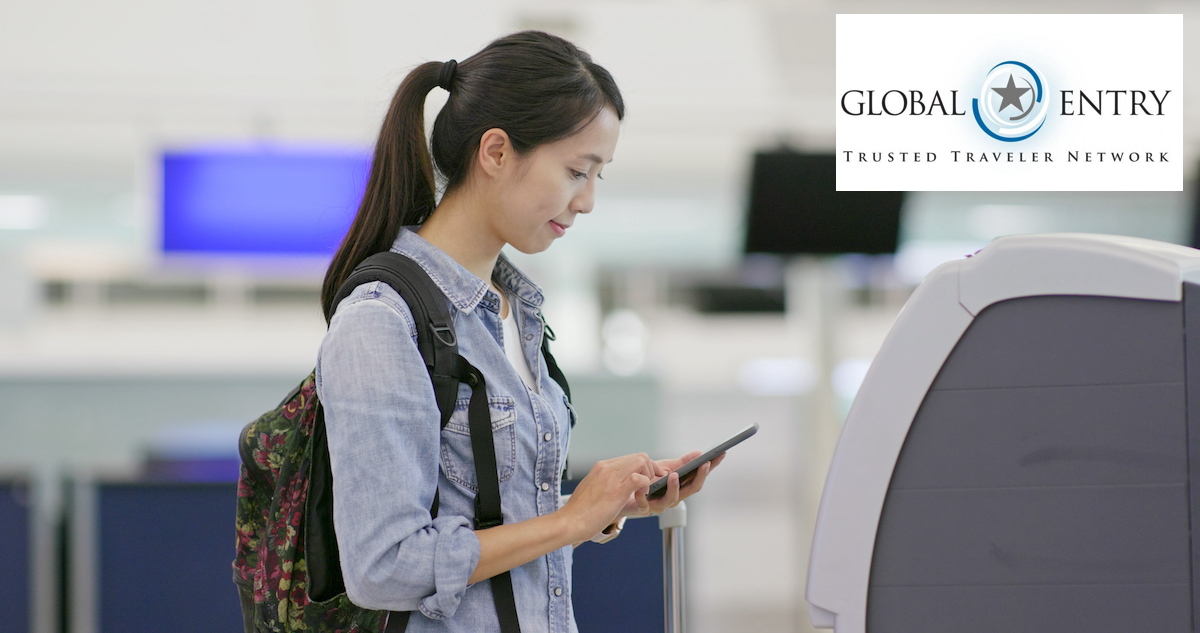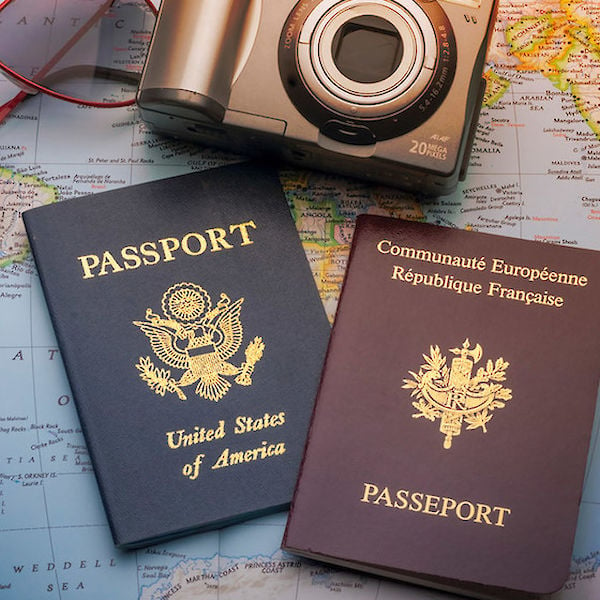Global Entry Trusted Traveler Network Program
Last updated on 08/26/2021

What is a Global Entry Card?
Global Entry is a Trusted Traveler Program (TTP) available through the U.S. Customs and Border Protection service, which allows low-risk travelers to get pre-approved and receive faster clearance upon arrival into the United States via air, land, or sea. Global Entry cards are issued to Global Entry members who are eligible. Currently nationals of the following countries are able to apply for Global Entry: Argentina, Colombia, Germany, India, Mexico, Panama, Singapore, South Korea (members of Smart Entry Service), Switzerland, Taiwan, United Kingdom (British citizens only), United States (nationals and permanent residents). Nationals and permanent residents of Canada are not eligible for Global Entry, however, they are able to apply for a similar program called NEXUS (operated jointly by the U.S. Customs and Border Protection and the Canada Border Services Agency), which offers the same benefits including the use of Global Entry kiosks.
How Do I Apply for Global Entry?
To apply for Global Entry, travelers must first create a Trusted Traveler Programs account. After the account has been created, the applicant must file an application with the U.S. Customs and Border Protection. Next, you will need to submit to an interview and background check. Once the application has been submitted, applicants will need to wait for either a conditional approval or rejection. If you are a first-time applicant and you are conditionally approved, you must schedule an appointment for the interview, photograph, and fingerprinting at a Global Entry Enrollment Center. Applicants should note that wait times for interviews may be months to a year. Each applicant will need to bring a valid passport and one other form of identification, such as a driver’s license or ID card. If you are a lawful permanent resident, you will need to provide your machine-readable permanent resident card.
How Much Does a Global Entry Card Cost?
The application fee for the Global Entry Program is $100 USD and is due at the time of applying. This fee is non-refundable and applies to adults as well as children and infants. Some credit cards will reimburse the fee for the filer and their household family members, so check with your issuing bank to find out if your credit card qualifies. While the membership is valid for five years, renewal is subject to the same $100 fee.
How Do I Activate My Global Entry Card?
To activate your Global entry card, log into your Trusted Traveler Program (TTP) account. Once you are logged in, click on the “Activate Membership Card” link underneath the Program Memberships section. Next, you will be prompted to set up a login.gov account, which requires some additional biographical information and the PASSID/Known Traveler Number (KTN). This number is found on the back of your card (more on that below). The system will verify that the number matches the existing record. Once the record has been verified, you will be able to activate your card using the 3 digit Security Code located on the back of the card.
If you do not see your membership information or card activation options, click on edit profile and add the PASSID/KTN to the last box. This will link your membership to your login.gov account. Once the Global Entry card has been activated, the "activate card" button will no longer be visible. Activation is required for all land border crossings.
How Do I Use a Global Entry Card?
Enrolled Global Entry members can take advantage of expedited processing when entering or reentering the United States by using either the Global Entry card itself or details from it depending on the type of entry port.
If arriving at an airport, members will likely need to enter details from the Global Entry card into a kiosk or other computerized customs form. Air passengers will also need to scan in their machine-readable passport or permanent residency card, submit fingerprints to establish their identity, and complete a customs declaration form. Once the process has been completed, the member will be issued a receipt, which either instructs them to proceed to baggage claim or to an inspection booth for an interview.
If you are entering the U.S. by land or sea, you'll need the Global Entry card itself to proceed. This is because the cards have RFID technology, which is used to process and expedite entry. This is especially true if you'll be entering the U.S. in a vehicle at either the Canadian or Mexican border. Some sea ports also process entry and re-entry this way but not all ports offer lanes that use RFID. For this reason, it's best practice to keep your Global Entry card on you when entering or reentering the U.S. at any type of port.
How to Read a Global Entry Card
A Global Entry card contains several important pieces of information. Upon receiving the card, approved applicants should inspect the information for accuracy. Travelers should also understand where to find information pertinent to the entry process. While the Global Entry card is not physically required upon entry, some of the information is entered into the kiosk or provided to customs personnel so it's important to know how to read your Global Entry card.
What is a Known Traveler Number on a Global Entry Card?
The Known Traveler Number, or KTN, refers to the membership number with a Trusted Traveler Program, specifically Global Entry in this case. This number allows you to access Global Entry lanes at land, air, and sea ports. For approved Global Entry members, the KTN is the Customs and Border Protection PASSID.
Where is the KTN on a Global Entry Card?
The Known Traveler Number is a nine-digit code, which can be found on the back of your Global Entry card. Approved members can also log into their Trusted Traveler Program account to access their KTN.
What is a Redress Number & Do I Need One?
In some cases, members of the Global Entry program are misidentified as passengers who require additional security screening. This can be due to a number of issues, but most of the time it is a result of having a similar name or other information as someone on the no-fly list or has been identified as a security threat. When this happens, Global Entry members can apply for what's known as a redress number. Redress numbers are case numbers issued by the Department of Homeland Security, which allow agencies like the TSA to identify travelers that may have been misidentified as threats. Not every Global Entry member needs a redress number, but if you've been chosen for secondary security screening multiple times or you frequently see "SSSS" written on your boarding pass, it's a good idea to apply for a redress number so you can have erroneous information removed from your file and avoid further issues during border entry.
How Do I Apply for a Redress Number?
To apply for a redress number, travelers must go through the Department of Homeland Security TRIP (Traveler Redress Inquiry Program) process and submit an application. The application form can be filled out online or printed out and submitted via mail. Travelers may also print out the application, then digitally scan it and submit it via email. Once you've submitted an application, you have 30 days to provide the required travel details, identity information, and documents. Keep in mind that processing does take time and some have reported the process taking up to 50 business days. We recommend applying online or through email since applying via mail may significantly slow down your approval. Travelers can also monitor the status of their redress application online.
Where is the Redress Number on a Global Entry Card?
Many travelers ask where to find the redress number on their Global Entry cards, however, since not all travelers are issued redress numbers they are not typically printed on the Global Entry cards themselves. If you have applied and been approved for a redress number, you can access the number by checking your account with the Department of Homeland Security TRIP system. Once you have your redress number, you'll want to save it so you can enter it during checkout for airline tickets or other travel arrangements. Oftentimes the redress number will then be printed on your boarding pass, which helps avoid unnecessary security checks.
Where is the TSA Number on a Global Entry Card?
For the purpose of the Global Entry program, what people often refer to as the "TSA number" or "TSA PreCheck number" is actually the Known Traveler Number, or KTN, referenced above. During the checkout process for your travel reservations, simply enter the nine-digit KTN in the TSA PreCheck field. As long as the number matches TSA's records, the traveler will be able to take advantage of expedited processing lanes for boarding and security.
If you do not know your KTN at the time of checkout, you can call your travel supplier to have it added at a later time. We recommend doing this at least 24 hours before your departure. Additionally, some travel suppliers will allow you to save the KTN within your account so it is always applied to your reservations.
How Do I Renew a Global Entry Card?
Membership renewal is required after five years, and the renewal process is similar to the initial application. Each time you renew, the same $100 fee applies. Some renewals may be subject to another interview process, but renewing early is the best way to minimize your chances of additional interviews. We'll explain more on expiration and renewal below.
Can I Renew My Global Entry Card After Expiration?
Yes, however, it is not advisable to wait until after your Global Entry card expires. Early renewal is encouraged and can be applied for as soon as 365 days ahead of the expiration. Failure to renew on-time results in permanent discontinuation, which means an entirely new application is required, and an interview is required (remember, on-time renewals do not always require another interview). You become eligible to renew your membership one year prior to program expiration. If you submit a renewal application before your membership expires, you will be able to continue to use benefits up to 6 months after your membership expiration date, if your renewal does not get processed in time.
What if My Global Entry Card was Lost, Stolen, or Damaged?
If you no longer have your Global Entry card or it was damaged, you can request a new one through your Trusted Travelers Programs (TTP) account.
How Can I Get a Replacement Global Entry Card?
To request a new Global Entry card, simply log into your TTP account and click on the "Replace Card" option under the Program Membership section. Next, select the reason that fits your situation. There is a $25 replacement fee, which must be paid before a new card is issued and mailed to the address in your profile. For security reasons, the cards are mailed in plain white envelopes and cannot be forwarded.
One thing to note is that if you will be entering the U.S. via the Canadian or Mexican land border, you will need to have the card on your person. This is due to the Radio Frequency Identification (RFID) in the cards, which is used for expedited return by vehicle. The physical card is not required at airport kiosks in the United States, so rather than replacing the card you can simply enter the details from your TTP account at the kiosk.
What if I Never Received My Global Entry Card?
If you did not receive your Global Entry card in the mail in the expected timeframe, we recommend you log into your TTP account to check on the status. If the status has been approved and your card was mailed, you may need to follow the replacement steps outlined above to get a new one.
How Long Does It Take to Get a Global Entry Card?
The U.S. Customs and Border Protection website states that it may take 6-8 weeks to receive your Global Entry card in the mail. However, some applicants have reported longer than expected wait times. It's also important to note this timeframe does not include the application and interview process, which as stated above, can take up to a year. In short, it's best to plan well in advance of your intended travel dates.
What’s the Difference Between a Global Entry Card and a Passport Card?
While a Passport Card is cheaper, it does not offer the same benefits as a Global Entry card. The passport card cannot be used for entry or re-entry to the U.S. at airports, only land or sea ports from Canada, Mexico, the Caribbean, and Bermuda. Since Global Entry members will need a passport anyway, we recommend getting a passport book rather than a passport card because passport books allow for international travel by land, sea, or air.
Can a Global Entry Card be Used for TSA PreCheck?
Yes. As mentioned above, the Known Traveler Number (KTN) is used as the TSA PreCheck number. As long as the KTN and TSA PreCheck numbers match TSA's records, you will be able to use the Global Entry card for TSA PreCheck.
Do I Need to Carry My Global Entry Card while Traveling?
We recommend that travelers carry their Global Entry card with them when entering the United States via land and sea borders. This is because the cards use RFID technology in order to expedite entry for those in vehicles.
While it is not necessary to carry your Global Entry card with you at airports, several pieces of information from the card still need to be entered into the kiosk or provided to customs personnel. If you do not have your Global Entry card with you but are not entering the U.S. via a land or sea border, make sure to log into your TTP account in advance to make sure you have all the required information for security processing.
Can I Get a Global Entry Card with a Criminal Record?
Any type of criminal conviction may disqualify travelers from the Global Entry program. The system is risk-based, so criminal charges or other legal issues, especially those pertaining to customs, are likely to disqualify the applicant. Applicants may also be rejected for providing false, inaccurate, or misleading information. Three to five percent of travelers report being denied.
Can I Appeal a Rejected Global Entry Application?
Yes, applicants who were denied have three options for appeal. The first option is to make an appointment to speak with a supervisor at a trusted traveler enrollment center. Rejected applicants can also email the CBP Trusted Traveler Ombudsman. The last way to appeal is by filing a complaint through the Department of Homeland Security's TRIP system.


